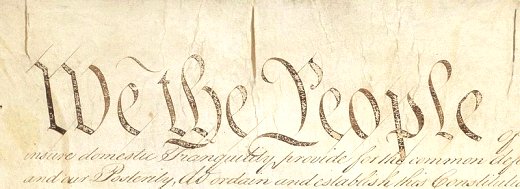


 Constitution Part 3
Constitution Part 3
In the first lesson on the Constitution of the United States of America, we shared information about the Constitutional Convention and the four months that the Convention delegates spent creating this important document. When they finally agreed on the procedures and freedoms presented in the document, the delegates signed the document on September 17, 1787. The Continental Congress accepted the Constitution where they began the process of ratification.
One of the biggest strengths of the United States is the ratification process that involves state legislatures. The Constitution guarantees sovereign rights to the people in each state as long as the rules in the Constitution are maintained and that those rules do not harm the well being of the Country. To spread the word around the states, people used printed documents like papers and brochures.
The Federalists were the men who worked hard to get the Constitution accepted around the states. The famous Federalists were men like John Jay, James Madison, and Alexander Hamilton. These men wrote 85 different essays called "The Federalist Papers" which were designed to teach the public about Government that worked with a system of checks and balances. The Federalists did not want to see one person or a small group have enough power to be able to remove the freedoms of the land and create a tyrannical government. The Federalists also believed in the idea that the states would be a part of the union so they could be involved in the checks and balances to accept of reject new laws and amendments.
Despite the time it took to write the Constitution, there were still some problems with the document. It clearly prescribed the checks and balances for the federal government, but it did not protect the citizens and their rights. The Bill of Rights was the solution to the problem. James Madison wrote the document in 1789 and the ten Amendments actually came from a list of twelve.
The most commonly referenced Amendments are the first and second. The first Amendment is referenced because of the rights to freedom of speech and freedom of religion. The lesser known part of that Amendment is the freedom to peaceably assemble. The second Amendment is one that is frequently discussed and debates because it contains the words about giving citizens the right to bear arms. This was included as an Amendment because the country just finished fighting against the British Empire in the Revolutionary War.
The Constitution and the Bill of Rights ensured that the government would be strong, but the citizens of the land would be strong, too. However, the Anti-Federalists, especially Patrick Henry who said, "Give me liberty or give me death," were against the idea of the Constitution and an overly strong Federal government. The Anti-Federalists were afraid that the federal government would turn into a tyrannical monarchy, which was what they just finished fighting to be free of so recently. Just as the Federalists wrote papers in support of the Constitution, the Anti-Federalists wrote papers against the Constitution, but for an additional document providing and securing rights for individuals. In response to Patrick Henry's concerns, Thomas Jefferson said, "Half of a loaf is better than no bread," referring to the Amendments to help manage the Federal Government that needed to be created. Balance was necessary and this was why the Bill of Rights struggle to be ratified along with the Constitution.
When the Constitution and Bill of Rights were both ratified, the three branches of government were established. They included and still include the Executive branch with the President's office and advisers, the Legislative branch including the House of Representatives and Senate, and the Judicial branch with the judges providing the final check and balance interpreting the Constitution and laws.
Executive Branch
The President is the head of the Executive Branch with many duties that protect the laws. The President acts as a figure head attending ceremonies, as the executive protecting the citizens from foreign attacks, and a law-maker recommending new laws for the Legislative Branch to debate. The Executive Branch oversees many departments like the Departments of Defense, Agriculture, and Commerce. It is the job of the Executive Branch to oversee that the laws of the country are enforced so the country can maintain order.
Legislative Branch
The Congress includes the Senate and the House of Representatives and these two groups make up the Legislative Branch of government. The Senate includes two Senators from each state and the House of Representatives includes representatives based on the populations of each state. The Legislative branch is responsible for proposing and changing laws that affect the country and the individual states. Citizens of each state vote for their legislators on a rotation basis and it is important to vote so your voice is heard. With your vote for the legislators in your state, you have some say in how legal matters are conducted and what the quality of life is like in your state.
Judicial Branch
The final branch of government is the Judicial Branch, which includes the Supreme Court. This branch was created to interpret and support the Constitution and the courts are important because they ensure that laws do not violate the Constitution. Besides judges, other judicial employees include court reporters, bailiffs, security guards, paralegals, and lawyers. The Judicial Branch is a very large branch of government with elected officials and professional employees who work together to keep the government functioning the best it can.
About the Authors: Sylvia Rausch, of Fraley Cooper (Court Reporters Columbus Ohio) along with Aaron Schulman, a web developer, acoustic guitar review writer, former educator and business consultant helped to sponsor this second lesson of a 3 part article series for Garden Of Praise to help give parents and students a solid foundational understanding of the historical importance of the US Constitution and Legal System.

 Constitution Part 3
Constitution Part 3